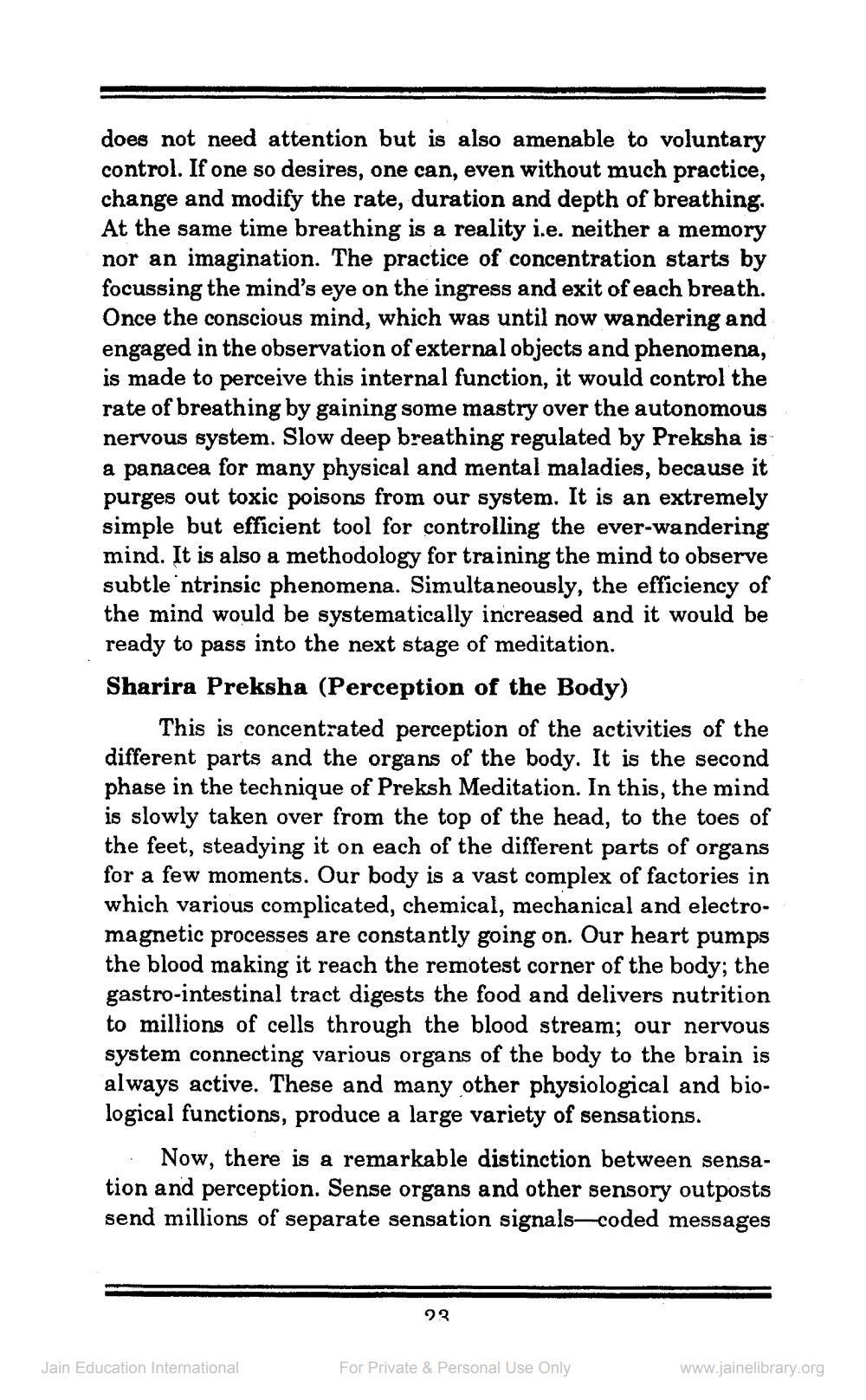________________
does not need attention but is also amenable to voluntary control. If one so desires, one can, even without much practice, change and modify the rate, duration and depth of breathing. At the same time breathing is a reality i.e. neither a memory nor an imagination. The practice of concentration starts by focussing the mind's eye on the ingress and exit of each breath. Once the conscious mind, which was until now wandering and engaged in the observation of external objects and phenomena, is made to perceive this internal function, it would control the rate of breathing by gaining some mastry over the autonomous nervous system. Slow deep breathing regulated by Preksha is a panacea for many physical and mental maladies, because it purges out toxic poisons from our system. It is an extremely simple but efficient tool for controlling the ever-wandering mind. It is also a methodology for training the mind to observe subtle ntrinsic phenomena. Simultaneously, the efficiency of the mind would be systematically increased and it would be ready to pass into the next stage of meditation. Sharira Preksha (Perception of the Body)
This is concentrated perception of the activities of the different parts and the organs of the body. It is the second phase in the technique of Preksh Meditation. In this, the mind is slowly taken over from the top of the head, to the toes of the feet, steadying it on each of the different parts of organs for a few moments. Our body is a vast complex of factories in which various complicated, chemical, mechanical and electromagnetic processes are constantly going on. Our heart pumps the blood making it reach the remotest corner of the body; the gastro-intestinal tract digests the food and delivers nutrition to millions of cells through the blood stream; our nervous system connecting various organs of the body to the brain is always active. These and many other physiological and biological functions, produce a large variety of sensations.
Now, there is a remarkable distinction between sensation and perception. Sense organs and other sensory outposts send millions of separate sensation signals-coded messages
23
Jain Education International
For Private & Personal Use Only
www.jainelibrary.org




